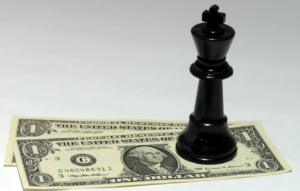Cash Flow Planning and Forecasting Strategies
Webinar Explains Purpose and Role of Cash Flow Statement in Business Success
If accounting is the science of looking back, then cash flow planning is the art of looking forward. The beginning of a new year is always a good time to review financial and accounting positions and make a plan for the future. The beginning of 2021 is doubly important because there are still so many different moving pieces to consider.
On January 5, 2021, Adams Brown hosted a webinar to help business owners and managers plan for the year ahead. While many businesses understand profit/loss and the balance sheet, the cash flow statement is generally underutilized. The webinar covered the ins and outs of the cash flow statement and how it’s used to better manage a company’s financial position.
What is the Cash Flow Statement and How is it Used?
The simplest explanation is that a cash flow statement is a summary of cash and cash equivalents entering and exiting a business over a certain period. The cash flow statement provides a picture of how well a company manages its cash position, which includes paying debt obligations, shareholder distributions, funding everyday operational expenses, and more.
Another use of the cash flow statement is identifying a breakeven. This provides an understanding of where every dollar received for the sale of a product or service is being spent. Two industry examples of breakeven are in oil and gas and agriculture. In oil and gas, the breakeven is the lift cost for producers. This is the market price for oil; when an oil and gas producer examines their lift cost and finds it is higher than the cost of a barrel, then they are losing money and should shut down wells to preserve profitability. In agriculture, the crop price and inputs are used to help farmers decide which crops to put in the ground to make a profit.
In both examples above, the breakeven is customized for the industry and helps business owners make financial decisions that are fine-tuned to whatever they are dealing with. Cash flow statements can further be customized by timeframe according to multiple years, yearly, quarterly, monthly, or even daily. Industries like restaurants that are very fluid may need to examine cash flow daily whereas construction may need a yearly or even 2-5-year cash flow to plan for larger-scale operations.
Structure of a Cash Flow Statement
Top to bottom, the cash flow statement contains four main categories that cover cash inflows and outflows: Cash from Operating Activities, Cash from Investing Activities, Cash from Financing Activities, and Disclosures.
First, cash from operating activities covers any sources and uses of cash from business activities. This reflects how much cash is generated from products or services. Examples include:
- Income
- Expenses
- Supplies and cost of goods sold (COGS)
- Salary and wages
- Rent payments
- Interest payments
- Income tax payments
- Any other type of operating expenses
- Inventory
Second, cash from investing activities includes any sources and uses of cash from a company’s investments, like any changes in equipment, assets, or investments related to cash. Examples are:
- Purchase or sale of an asset
- Loans made to vendors or received from customers
- Payments related to a merger or acquisition
- Balance sheet
Third, cash from financing activities includes sources of cash from investors or banks and uses of cash paid to shareholders. This includes:
- Payments of dividends
- Equipment purchased with financing
- Line(s) of credit
- Increases or decreases in debt
- Balance sheet
And fourth, the disclosure of noncash activities is normally only included when financial statements are being prepared under generally accepted accounting principles (GAAP).
 A common misunderstanding occurs when income is up, but cash or cash increases are not. Usually, this is due to confusion over what’s a cash flow statement item and what’s a balance sheet item. Four scenarios that would easily explain this situation are:
A common misunderstanding occurs when income is up, but cash or cash increases are not. Usually, this is due to confusion over what’s a cash flow statement item and what’s a balance sheet item. Four scenarios that would easily explain this situation are:
- Debt decreased after paying off a line of credit, which is a financial activity on the balance sheet, not profit or loss,
- An asset was purchased with cash, which is an investing activity on the balance sheet, not the cash flow statement,
- Inventory has increased, which is an investment activity, and again, reflected on the balance sheet, or
- Shareholder distribution or personal spending, which are non-deductible expenses and reflected on the balance sheet.
Scenarios like these are why every business owner needs to conduct a cash flow evaluation regardless of how formal or informal it is. Even a quick conversation can walk most businesses through their cash situation.
Cash Flow Forecasting
Understanding the cash flow statement is important but is only one piece of the puzzle. It is a historical document that shows what happened in the business up to a certain point in time. Forecasting, on the other hand, is a financial roadmap for 12-24 months in the future but should be adjusted as needed. An effective forecast is dynamic, evolving, and updated as conditions change in the economy, marketplace, and business.
One example of a dynamic cash flow forecast is from the restaurant industry. In 2020, input prices increased substantially. If the cash flow forecast weren’t updated accordingly, a restaurant could lose profit margins without even knowing it. Another example is in construction, where the prices for lumber and steel significantly rose this past year. If a contractor continued to bid jobs the same way as in 2019 or even early 2020, they would lose money.
Navigating Cash Flow Forecasting …
 It’s recommended to keep a “cash is king” mentality when running a business. To that end, navigating the changing terms between vendors and customers is key, for example:
It’s recommended to keep a “cash is king” mentality when running a business. To that end, navigating the changing terms between vendors and customers is key, for example:
- As a buyer, try to take advantage of prolonging cash payments to take invoices to their full net 30 or net 60 days, or utilize any vendor discounts for paying early.
- Bill as early and as often as possible to keep cash coming in.
Additionally, it may be necessary to increase prices as cost rise as one way of preserving cash flow, or utilizing outsourced contractors until market conditions stabilize. Paying attention to changing conditions and opportunities within the industry is always a good idea, such as low interest rates that could enable debt refinancing.
… In the Wake of COVID-19
At the beginning of the year, businesses may need to evaluate 2020 and adjust expectations for 2021. Some sectors took drastic hits last year while others had record years, and while it depends on the type of business and industry, both scenarios could be temporary.
A trend analysis is a helpful tool, though COVID-19 may skew the results. A trend analysis looks at previous years to pull financial information and data and compares it to the current and projected forecast. The goal is to determine what went well, outline where a problem arose, and determine where to focus on for the future. In many cases, the trend analysis may go back to 2018 or 2019 results, but individual situations and circumstances need to be considered.
Part of cash flow forecasting in the new year involves recent legislation to make PPP loans non-taxable if forgiven. When a PPP loan is forgiven, it is moved from a liability account to another income account. This will increase some businesses’ net income and reduce tax liability, both of which contribute to cash flow forecasting. In any case, there is always the need to be flexible and prepared for changes as they come.
Conclusion
The most important takeaway is that cash flow planning should be done regularly and according to changing business needs. Business owners and managers who understand how the cash flow statement works and impacts their success are better prepared for whatever changes may come, whether unexpected or planned.
Contact your Adams Brown advisor for questions about cash flow planning and forecasting or if have questions about the upcoming tax season.
